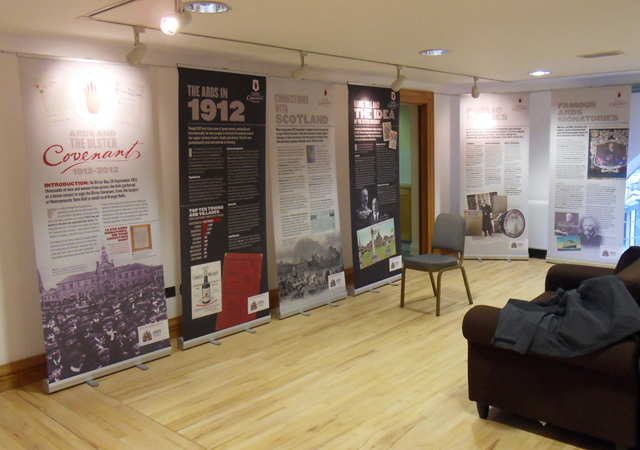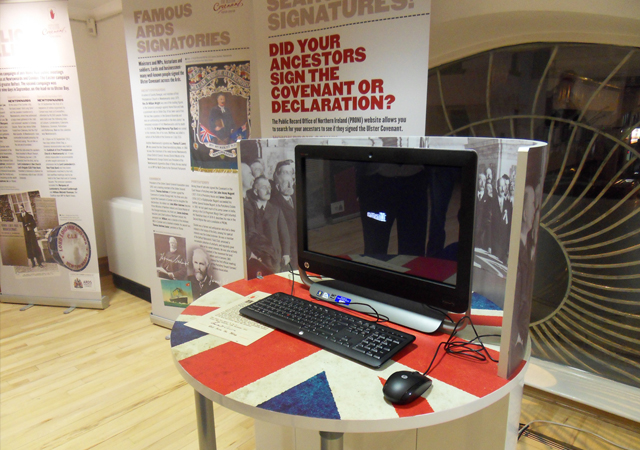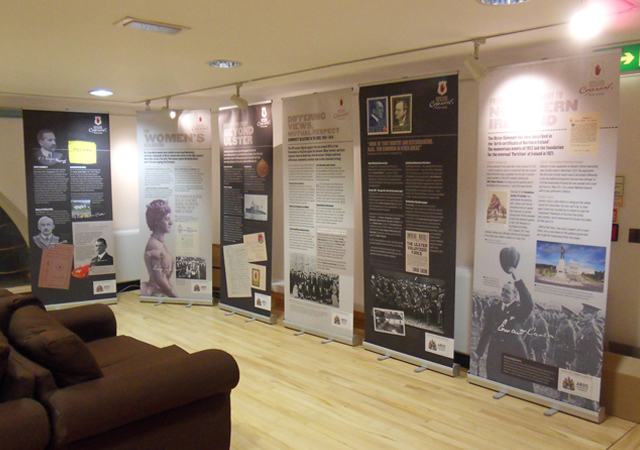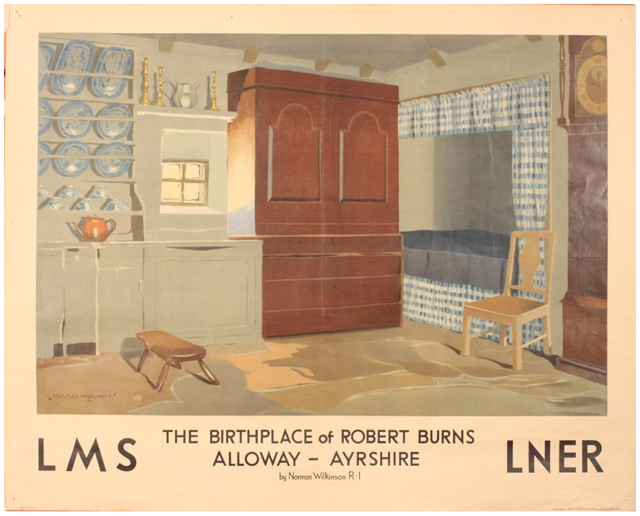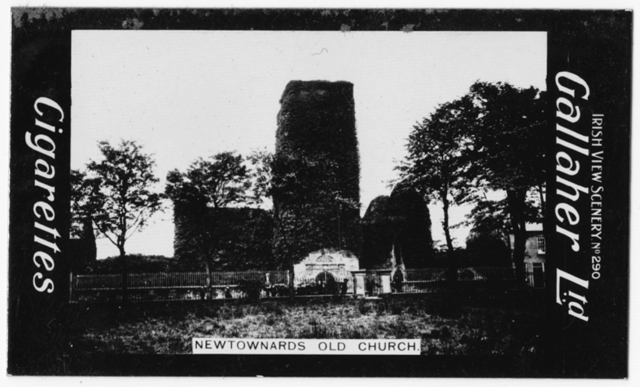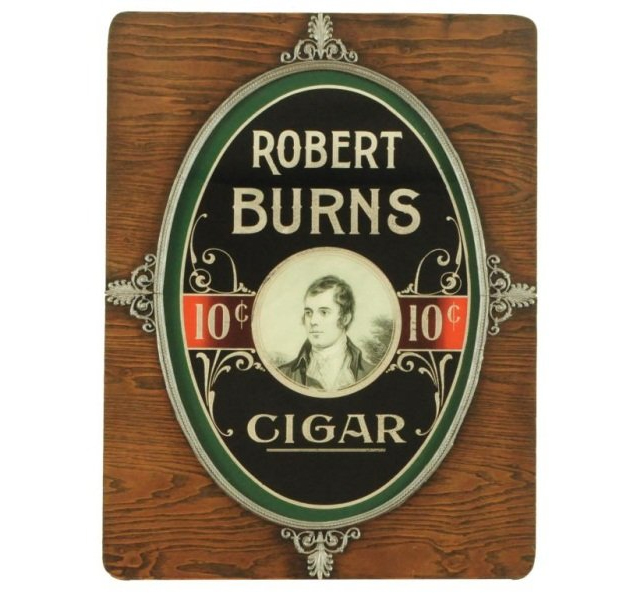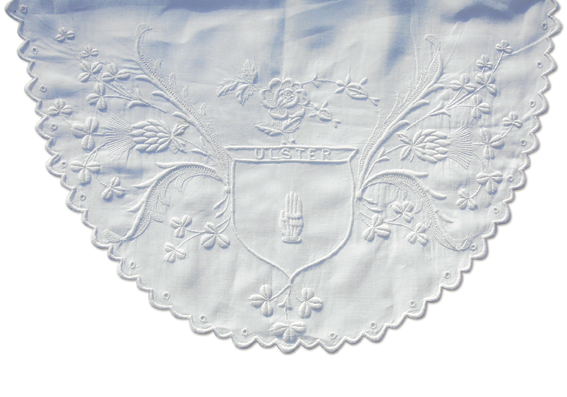
Above: an old embroidered place setting from my own collection, showing Ulster as a combination of Thistle, Rose and Shamrock. Probably circa 1930.
I still have trouble explaining - often to people who really should know better - that the political 'two tribes' Troubles industry is not the only way to view life and history of Ulster and Northern Ireland. Perhaps the Troubles industry is too lucrative, too much of an easy-sell, for those who have grown wealthy, famous or even lazy by perpetuating it. It fills airtime and column inches, it sells books and theatre tickets, keeps people in certain jobs, and consequently fills people's hearts and heads. Politics has its place, but it should not be everything.
I will continue to argue for the cultural three strands story. On Christmas Day I was loaned a book (now that's miserly, eh?!) entitled The Orange Order, written by a Tony Gray, published in London in 1972. I have not started to read it yet, but the short author's bio on the verso caught my eye. It gives some of Gray's background, mentioning that '... his mother comes from an Ulster family of Scots-Irish settlers called McKee, his father was Anglo-Norman in origin and Church of Ireland by persuasion; and he married an Irish Catholic. So, as he says, he has been exposed to three of the main strains in the Irish situation ...'.
Thistle, Rose & Shamrock. Scottish, English & Irish. Presbyterian, Anglican & Catholic. Three cultural sides to the story, not two.
..........
Thanks to the many thousands of you who bother to visit and read here throughout the year. I plan to be offline for a few days, so enjoy your New Year / Hogmanay celebrations and I'll be back in early 2013 (dv) with the same themes and some new thoughts and discoveries along the way.
Sunday, December 30, 2012
Three into two won't go
Friday, December 28, 2012
A message from the Ulster Tourism Development Associations to Americans, 1936
'... A Romantic Holidayland indelibly associated with the history of the great American nation ...'
Thursday, December 27, 2012
The Stories of Robert Burns & St Andrew
Thanks to Robin for sending me the Burns animation below. The same people produced the one about St Andrew. Our distinctive stories could also be treated with this kind of simplicity and creativity. Both are from AboutScotland.
Wednesday, December 26, 2012
Wee words - 'stoon'
Spending time with folk and talking with them always makes great oul Ulster-Scots & Scots vocabulary rise to the surface. My mother has been wracked by deteriorating health for many years now; she was talking this evening about pains in her legs and described them as 'stoons'.
• James Fenton's The Hamely Tongue has 'stoon' as 'a sudden sharp spasm of pain'.
• The Chambers Scots Dictionary has the words 'stound', 'stoun' and 'stund' meaning 'to ache, throb', 'an intermittent throbbing pain' and 'a sharp, sudden pang'.
Monday, December 24, 2012
Sunday, December 23, 2012
Thursday, December 20, 2012
Esso Pictorial Plan of Scotland, circa 1932
With the site of the Covenanters' victorious Battle of Drumclog of 1679 marked. Wikipedia entry here.
The Lone Bellow
This is the hardest way to shoot a film - a single shot with no editing capturing a raw, live performance. Looks great, and the music is pretty good too. Have only watched / listened to it once, I suspect it'll grow on me. Website here.
Friday, December 14, 2012
Charles H Spurgeon on Christmas - '...I wish there were ten or a dozen Christmas-days in the year; for there is work enough in the world, and a little more rest would not hurt labouring people...'
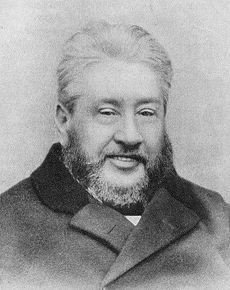
I am often reminded by my more traditionalist friends that Christmas wasn't a public holiday in Scotland for many centuries, an attitude which was carried across the water to Ulster and which continued well into my parents' generation - and remains in some quarters today. Some of the opposition to Christmas (such as the over-indulgence and twee sentimentalisation of the Christmas story) is perfectly valid, and there are sound theological objections as well. But I suspect it's also just an opportunity for miserable graceless killjoys to feel superior to other folk who enjoy the celebrations at the darkest time of the winter.
Charles H Spurgeon had some interesting things to say about Christmas. Thanks to this blog I have found them again:
'...In December of 1855 he preached on "The Incarnation and Birth of Christ" from Micah 5:2. His opening words were these:
THIS is the season of the year when, whether we wish it or not, we are compelled to think of the birth of Christ. I hold it to be one of the greatest absurdities under heaven to think that there is any religion in keeping Christmas-day. There are no probabilities whatever that our Saviour Jesus Christ was born on that day and the observance of it is purely of Popish origin; doubtless those who are Catholics have a right to hallow it, but I do not see how consistent Protestants can account it in the least sacred. However, I wish there were ten or a dozen Christmas-days in the year; for there is work enough in the world, and a little more rest would not hurt labouring people. Christmas-day is really a boon to us, particularly as it enables us to assemble round the family hearth and meet our friends once more. Still, although we do not fall exactly in the track of other people, I see no harm in thinking of the incarnation and birth of the Lord Jesus.
In the same vein Spurgeon preached a message entitled, "Mary's Song," based on Luke 1:46-47 (#606, MTP). In it he says,
Observe, this morning, the sacred joy of Mary that you may imitate it. This is a season when all men expect us to be joyous. We compliment each other with the desire that we may have a "Merry Christmas." Some Christians who are a little squeamish, do not like the word "merry." It is a right good old Saxon word, having the joy of childhood and the mirth of manhood in it, it brings before one's mind the old song of the waits, and the midnight peal of bells, the holly and the blazing log. I love it for its place in that most tender of all parables, where it is written, that, when the long-lost prodigal returned to his father safe and sound, "They began to be merry." This is the season when we are expected to be happy; and my heart's desire is, that in the highest and best sense, you who are believers may be "merry." Mary's heart was merry within her; but here was the mark of her joy, it was all holy merriment, it was every drop of it sacred mirth. It was not such merriment as worldlings will revel in to-day and to-morrow, but such merriment as the angels have around the throne, where they sing, "Glory to God in the highest," while we sing "On earth peace, goodwill towards men." Such merry hearts have a continual feast. I want you, ye children of the bride-chamber, to possess to-day and to-morrow, yea, all your days, the high and consecrated bliss of Mary, that you may not only read her words, but use them for yourselves, ever experiencing their meaning: "My soul doth magnify the Lord, and my spirit hath rejoiced in God my Savior."
Finally, someone sent me this quote several years ago. It certainly sounds like Spurgeon, but I have not been able to document it. If you know where it comes from, please let me know. Whether he said it or not, it expresses the sentiments of my own heart very well.
"Now a happy Christmas to you all; and it will be a happy Christmas if you have God with you. I shall say nothing to day against festivities on this great birthday of Christ. We will to-morrow think of Christ's birthday; we shall be obliged to do it, I am sure, however sturdily we may hold to our rough Puritanism. And so, 'let us keep the feast, not with old leaven, neither with the leaven of malice and wickedness; but with the unleavend bread of sincerity and truth.' Do not feast as if you wished to keep the festival of Bacchus; do not live to-morrow as if you adored some heathen divinity. Feast, Christians, feast; you have a right to feast. Go to the house of feasting to-morrow, celebrate your Saviour's birth; do not be ashamed to be glad; you have a right to be happy. Solomon says, 'Go thy way, eat thy bread with joy, and drink thy wine with a merry heart; for God now accepteth thy works. Let thy garments be always white; and let thy head lack no ointment.'
"Religion never was designed to make your pleasures less."
Recollect that your Master ate butter and honey. Go your way, rejoice tomorrow, but in your feasting, think of the Man in Bethlehem; let him have a place in your hearts, give him the glory, think of the virgin who conceived him, but think most of all of the Man born, the Child given. I finish by again saying, ---
"A HAPPY CHRISTMAS TO YOU ALL"...'
..........
Here's a film of Spurgeon's life -
Monday, December 10, 2012
'...based on an ages-old Scots-Irish murder ballad originally called “The Sisters Twa"...' +++ 'How a movie about murder revived a local musician'
(Article below by Timothy Finn of the Kansas City Star)
(click here for original)
• Wikipedia entry on 'The Twa Sisters' here
• Movie trailer here. (be warned, it's an 18)
• Mile Deep Films website here
• performance of the Scottish folk song here, sung in Scots.
• Gillian Welch's version below (with the story relocated from Scotland to County Clare)
TONY LADESICH'S FILM “Two Sisters” may have found its perfect home.
His award-winning 12-minute movie will be the centerpiece of the fourth annual Murder Ballad Ball, an evening of music that honors songs about love and homicide.
“Two Sisters” has been screened twice in Kansas City and once in Lawrence.
“I really don’t think it has had a real, proper coming-out showing in Kansas City yet,” Ladesich said.
Saturday’s showing could be its grandest yet.
The film is based on an ages-old Scots-Irish murder ballad originally called “The Sisters Twa.”
“There are many versions of it,” Ladesich said. “The first version of that I heard was by Gillian Welch, and I traced that back a few steps that included a version by Jerry Garcia and Vassar Clemens. They are virtually identical. But Gillian Welch’s version is the one that really destroyed me. It was so creepy.”
It also turned out to be a catalyst. For years, Ladesich had been contemplating the idea of making some kind of film about the murder ballad tradition. It was prompted by the cultural uproar that followed release of the Eminem song “Kim,” in which he kills his wife.
“I remember thinking, ‘Have you not been paying attention?’ ” he said. “This tradition goes back hundreds of years. A lot of those objecting the most were country music fans. That’s where this tradition started. I thought it would be interesting to take a traditional murder ballad and visualize and go, ‘Here is what you’re hearing.’ I thought visualizing it would add another layer of creepiness to it.”
He wrote a couple of original verses to the song, added some verses from older versions and made the couple married (they aren’t in the Welch version). He then went looking for cast members, but not in the usual places.
“I wanted all actors to be musicians first and actors second,” he said.
His cast comprises Mark Smeltzer, Richard Alwyn, Kasey Rausch and Erin McGrane. Off-camera he also enlisted singer/songwriter Mikal Shapiro as an executive producer. Fiddler Betse Ellis, formerly of the Wilders, is part of the film’s score.
“Erin is a great actress who is also a musician,” Ladesich said. “Kasey is not an actress; Mark is not an actor; Richard is a musician who is also an actor. It’s kind of an ‘anti-film.’”
Saturday will also be a coming-out of sorts for Ladesich, who is also a musician and songwriter. For the fourth year in a row, he will perform at the ball. This time he will feature his new band, the Secret Liquor Cure with Ben Ruth (bass), Kyle Dahlquist (accordion and pedal-steel guitar) and Sam Platt (drums).
Ladesich has been in a few local bands, including Sandoval, Pendergast and Faster Horses. Several years ago, he withdrew from the music scene to focus on filmmaking and videography.
“I’m able to make a decent living as a filmmaker, which is hard to do as a musician,” he said. “My creativity comes quicker as a filmmaker; its easier to come up with visual ideas than write good songs.”
All the musicians in the film will perform at the ball. So will Ellis and Shapiro. This year’s performance represents a revival of sorts for Ladesich.
“I went to New Orleans for nine days this year to shoot a documentary,” he said. “I’d never been there before. It blew my mind: the city, the people, the culture, the food, the music. It changed me. Music is everywhere. I sat in my hotel room one day lamenting the fact that I’d let the music-making part of me fade away. So I’m going to start playing more music.”
.....................
Sunday, December 09, 2012
From Scotland to Ulster to Virginia and New Zealand - 'Setting the record straight on Betsy Bell and Mary Gray'
Article by Charles Culbertson, published in the Staunton News Leader, Staunton, Virginia.
(click here for original)
One of the questions I’m most frequently asked regarding Staunton history concerns the city’s twin peaks of Betsy Bell and Mary Gray, the imposing and once unspoiled landmarks named after two young Scottish lasses. No other aspect of Staunton’s history — with the possible exception of the pronunciation of the word Staunton itself — is so fraught with misinformation and conjecture.
The tale I’ve heard most often is that the mountains are named after two local girls who were captured and killed by Indians. How it got started, no one knows, but this persistent fable has been around at least since the early 1830s when a Northern periodical printed a detailed account of the alleged tragedy. The author claimed to have gotten the story — which is utterly fictitious — from an old man sitting by the road in the shadow of the hills.
The truth behind Betsy (originally Bessie) Bell and Mary Gray can be found in Scotland in 1666, when two young girls seeking to avoid a plague fled to the Highlands. A young man in love with them both visited often, carrying supplies to the bower they had built. Unfortunately, he carried the plague with him and unconsciously gave it to Bessie Bell and Mary Gray.
The lasses sickened, died and were buried near Perth. Their death gave rise to a ballad, which traveled to Ireland with Scotch immigrants. These immigrants named two hills in the county of Tyrone after the girls (MT: I think this is near Newtownstewart); historians generally believe that Scotch-Irish settlers to Staunton saw a resemblance between the Irish mountains and ours, and bestowed the names on our twin peaks, as well.
As an interesting side note, two adjacent volcanic cones in New Zealand were also named Bessie Bell and Mary Gray by European settlers in the 19th century.
The name “Bessie” had changed to “Betsy” by the time of the Civil War, which saw the trees on its crest cut down for a Confederate observation post. Staunton historian Joseph Waddell once noted that Stauntonians could see smoke from the battle of Piedmont from this viewpoint.
In 1866, one anonymous letter writer to the Staunton Spectator in 1866 lamented the passing of the name “Bessie.”
“I prefer the original Scotch spelling and pronunciation of the former name,” he wrote. “‘Betsy’ as we call it now, is harsh and crabbed, but ‘Bessie’ is soft as is Apollo’s lute.”
The letter writer, who signed himself as “Oldest Inhabitant,” went on to praise the beauty of the mountains, noting that “surely no Staunton boy coming home from his wanderings ever fails to look out for the old familiar hills, and to hail them at first sight with feels akin to rapture.”
In the 20th century the mountains were owned by Staunton resident Charles Catlett, a noted local geologist, chemist and civic booster. He donated the acreage to the city in 1941 with the understanding that each spring the mayor and members of city council travel to the top of Betsy Bell and that the city maintain the crest of the mountain as a perpetual memorial to “the memory of its citizens who have given their lives in protecting the nation.”
Catlett also required that the city cut the shape of a cross out of the woods near the crest.
Both requirements are honored to this day.
.........
• Nelson McCausland's blog has this interesting posting about the story including the words of the ballad.
• Here is a recent story about efforts to restore the burial site.
Friday, December 07, 2012
The Music of Surry County, North Carolina - 'a combination of English, Scotch-Irish and African-American musical traditions'
This short film shows what happens when a community respects its own traditions, doesn't scorn them or turn its back upon them, and when young and old cherish something that's important to everyone. A big part of Northern Ireland's cultural demise is that over say the past 100 years or so people have fixated on so-called 'progress', and in doing so have deeply impoverished our community life. The wholesale grant-aided demolition of vernacular buildings is just one example. As a local man told me recently 'Folk in (village name here) don't care about history, they just care about money'. More to come on this theme in the new year...
Thursday, December 06, 2012
William McEwan, My Ain Countree (usually spelled Countrie)
My grandfathers favourite song. Finally located an original 78. One of 24 pieces recorded by McEwan in London, November 1911 - the first ever gospel recordings in the world.
Wednesday, December 05, 2012
Thursday, November 29, 2012
Tuesday, November 27, 2012
Thomsons / Thompsons and King Robert the Bruce
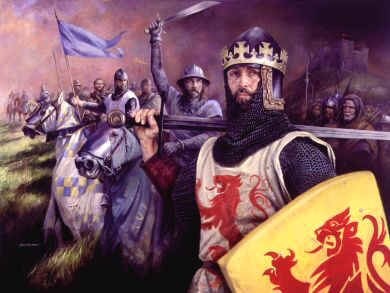
I like Robert the Bruce. For all sorts of reasons I'll not bother boring you with. So I was pleased a few weeks ago when a certain Mr Anderson was good enough to scan a page from The book of Ulster Surnames by Robert Bell, which he blogged about here.The Thompson/Thomson entry reads -
'...The name Thomson is among the first five in Scotland and in the Lowlands was of the same derivation as in England – 'son of Thom'. It was first recorded in 1318 when John Thomson, 'a man of low birth, but approved valour', was commander of the men of Carrick (in Ayrshire) in Edward Bruce's invasion of Ireland...'
The Bruces also came from Carrick - Turnberry to be precise, where their castle was on the site of today's famous golf course. So I did some checking and it was this same John Thomson who led the Bruce retreat from Ireland in 1318.
In the prolific Rev Thomas Thomson's A History of the Scottish People from the Earliest Times (1895) p 252 it says
'...the handful of Scots who survived the defeat were rallied by John Thomson, the leader of the men of Carrick; and having extricated them from the throng he effected a dangerous retreat to Carrickfergus, where they embarked for Scotland...'
I'm sure if I look at Barbour and other early texts I'll find the same Thomson. Our family tradition is that our Thompsons also came from Ayrshire, between Kilmarnock and Troon. The paper records we know of only go back to the mid 1700s, and even that early there was a Thompson family living in the townland where we still live today. I have no idea if I am descended from this much earlier Ayrshire John Thomson, and I expect there's no way to be sure.
But while there's doubt there's always hope - I'm glad he was a Bruce man and came to Ulster with them.
Sunday, November 25, 2012
John Knox, died 440 years ago on 24 November 1572
Did anyone mark this anniversary? I doubt it. Wikipedia entry here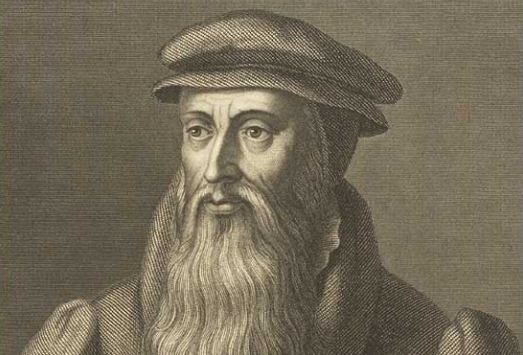 .
.
Saturday, November 24, 2012
Newtownards 1613
These two artefacts probably date from 1913, the 300th anniversary of the town Charter which was granted by King James I to Hugh Montgomery's blossoming Newtownards in 1613. The crescent/hand/fleur-de-lis symbol is from the Montgomery family coat of arms. It was quite an achievement for a place which (apart from a ruined Priory, a ruined castle next to it, and a ruined Movilla Abbey - all of which had been torched in 1572 by Sir Brian O'Neill to stop the Thomas Smith expedition using the buildings as garrisons) didn't exist until Montgomery and his crew arrived from Scotland in May 1606. Up to 40 towns across Ireland were chartered in 1613; I am aware of some plans to mark the Newtownards 400th anniversary next year. More info to follow in due course.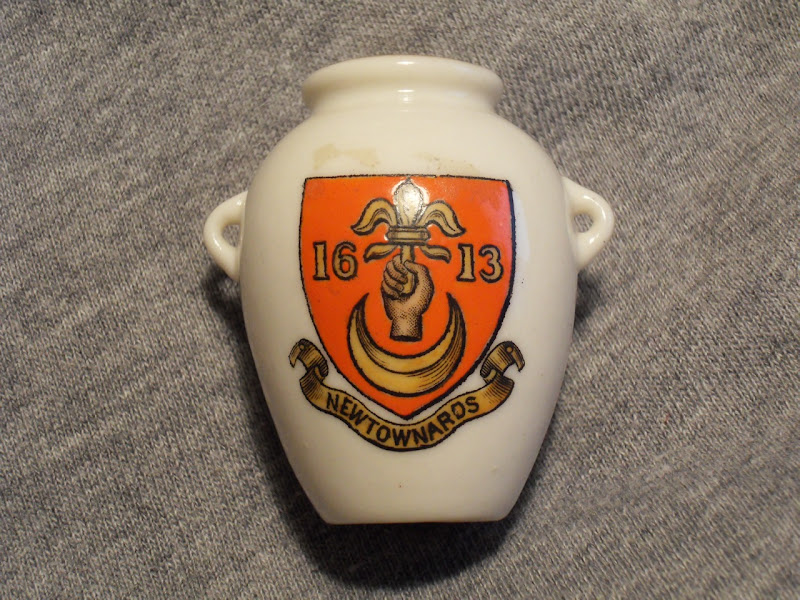
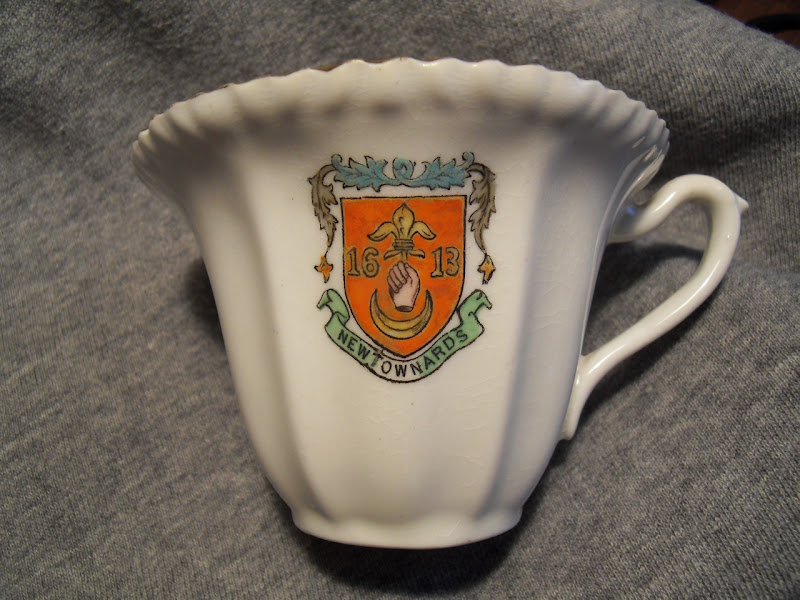
Friday, November 23, 2012
Tabletalk magazine - free offer for iPad edition
it's also available as a printed publication, but the free offer is only for the iPad version.
> Click here for the iTunes store.
> Click here for more info.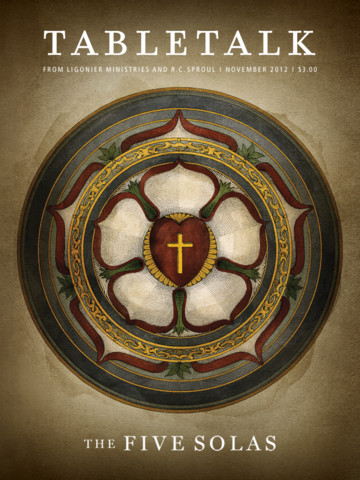
'...When you enter the sanctuary of Saint Andrew’s Chapel, you cannot help but notice the majestic pulpit that rises from the chancel and towers above the congregation. Although the pulpit is relatively plain in its structure and design, there is one unique feature to the pulpit that is noticed only upon a closer look. In the very center is an ornately carved emblem of a cross surrounded by rose petals. The emblem is a replica of the Luther Rose—the crest of the sixteenth-century Reformer Martin Luther. Luther designed the crest to teach the gospel to others, particularly the illiterate and children. The focal point of the Luther Rose draws our eyes to the central tenet of Luther’s theology—the cross.
The cross is set against the backdrop of a heart to remind us that we must believe in Christ with our hearts, which God graciously makes alive by the Holy Spirit. Rose petals surround the heart and the cross to highlight that faith in Christ results in joy, comfort, and peace on account of the finished work of Christ. The rose petals are fixed in a sky of blue to symbolize that our joy in the Holy Spirit by faith is our present hope of the future heavenly joy awaiting us. On the outer edge of the Luther Rose, encompassing the entire emblem, is a gold ring symbolizing the heavenly riches awaiting us in the eternal glory of heaven...'
Thursday, November 22, 2012
Wednesday, November 14, 2012
Field Notes - the stationery brand for Alan Lomax, Sam Hanna-Bell or Estyn Evans*
I just got an email advertising this range of old fashioned notebooks, pencils and stationery. Glorious. Website here. Beware of some of the language in the video!
Field Notes Brand: From Seed from Coudal Partners on Vimeo.

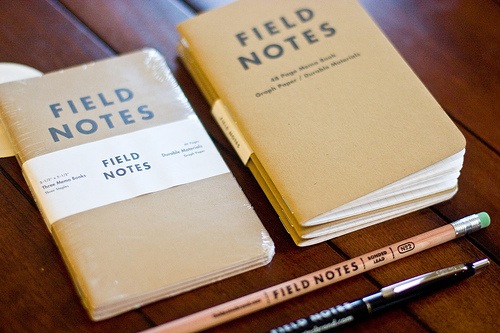
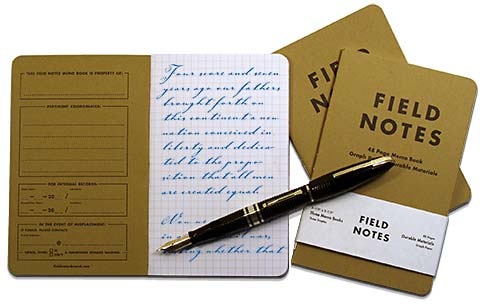
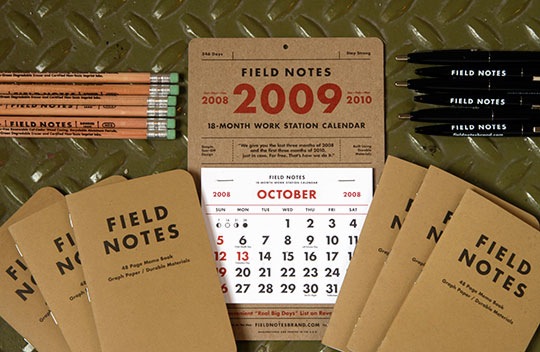


* what do you mean you don't know who they are??!!!
Friday, November 09, 2012
Hatfields and McCoys - worth a-watchin'!
This recent 6 hour mini-series (official website here) has just been broadcast on Channel 5, a dramatisation of the classic Scotch-irish post-Civil War mountain feud in Kentucky and West Virginia. Gripping viewing. An online review from the Los Angeles Times said: "Although deftly nailed into its time and place with sets and costumes so vivid you can smell the blue wood smoke and the stink of moonshine sweat, Hatfields & McCoys transcends the confines of its age by revealing the feud's posturing, resentments and callous violence that mirror the dynamics of modern urban gangs... It isn't a perfect piece — when faced with a choice between historic detail and story, Hatfields & McCoys errs on the side of detail, which is both the series' greatest strength and weakness."
'...We think of clans today mainly in connection with the Scottish Highlands. But they also existed in the lowlands, northern Ireland and England’s border counties where they were a highly effective adaptation to a world of violence and chronic insecurity. The clans of the border were not precisely the same as those of the Scottish Highlands, and very different from the Victorian contrivances of our own time. They had no formal councils, tartans, sporrans, bonnets or septs. But they were clannish in the most fundamental sense: a group of related families who lived near to one another, were conscious of a common identity, carried the same surname, claimed descent from common ancestors and banded together when danger threatened...' - from Albion's Seed by David Hackett Fischer (click here)
Thursday, November 08, 2012
WGA Fine Line Art - hand-drawn illustrations
Gordon McFarland's website offers a range of prints of scenes of Ulster. A few are shown below. All are © WGAFineLineArt so don't copy them. Click here for the website gallery and contact information.
BALLYMENA CASTLE (now demolished)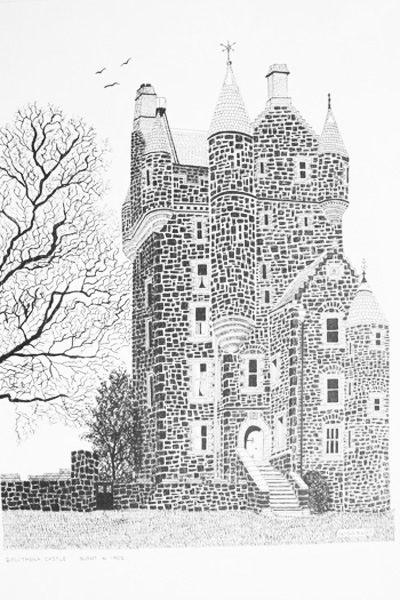
CARROWDORE CASTLE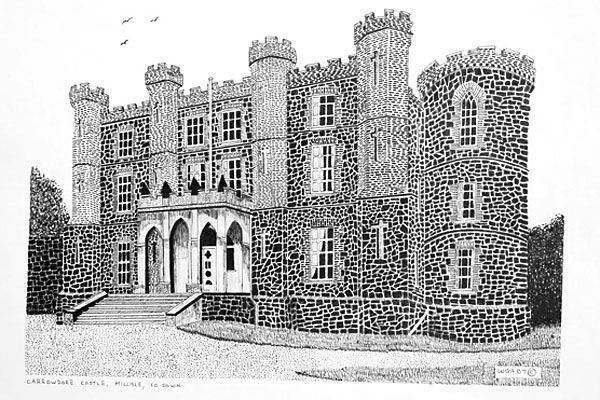
BROWNLOW HOUSE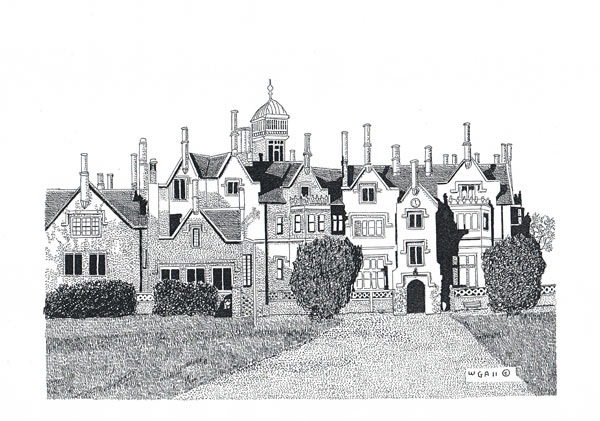
TOLLYMORE FOREST PARK ENTRANCE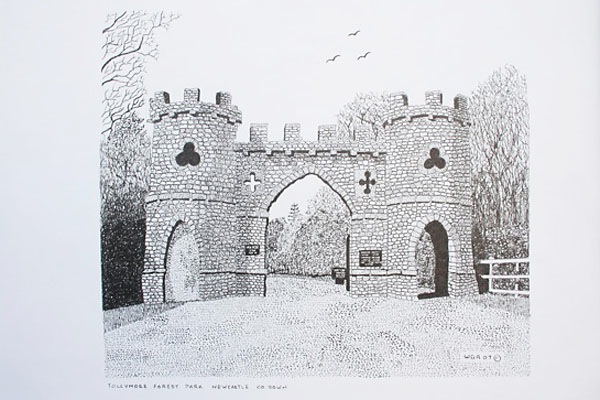
ARDS TT RACE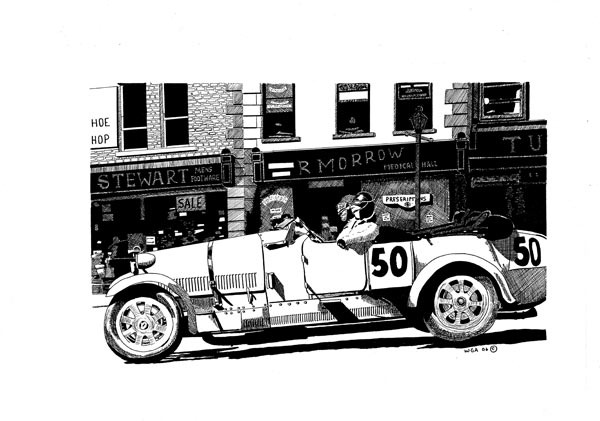
Tuesday, November 06, 2012
The Ards Door - architectural heritage in Newtownards (Castlebawn development)
With the recent news that the Castlebawn development in Newtownards has been given the go-ahead by the Planning Service, even in a climate of opposition from town centre traders and of course financial austerity, there are hopes that two major streets in the town which have been steadily deteriorating into almost-dereliction might finally be given a facelift.
One of the distinctive features of both Court Street and South Street are the remarkable amount of 'Ards doors' a specific arch-shaped doorway design made of distinctive Scrabo stone with a large keystone at the top, which was once such a signature of the town that tourism books describing the area remarked upon them -
'...this land must have changed little since the Viking ships and Norman cogs rolled and staggered through its narrow blue channel. Here and there crumbling Norman keeps rise from the shores, and stone causeways Norman-built link the nearer islands with the mainland. Here again we meet with typical Ulster farmhouses with their spread of whitewashed barns; their doors with fanlights and characteristic trimmings, called Ards doors, on account of their association with that district...'
- from The Face of Ulster by Denis O'D Hanna (1951)
Local features are gradually disappearing, and knowledge of them as well. I hope that someone has the good sense to preserve them, raise awareness of them and maybe they can be recovered as an Ards-specific feature once again. At the very least someone should photograph all of these doorways before any potential renovations are carried out and their distinctiveness is lost forever.
Monday, November 05, 2012
Gerald Anderson's Mumford guitar
I sat beside Gerald on a bus in Washington DC during the Smithsonian Folklife Festival in July 2007, where he was part of the Virginia delegation and I was part of the Northern Ireland one. I gave him one of our CDs and he gave me one of his, a gospel CD called "Anchored in Love", a lovely selection of old gems like Drifting Too Far from the Shore, I am a Pilgrim and I'd Rather Have Jesus. Here he is talking about a guitar he recently made for Mumford & Sons, and here's his website.
Sunday, November 04, 2012
The Twilite Broadcasters - 'Drifting Too Far From the Shore'
I came across this duet a while ago, and not long after that they were featured on the tv show 'Santer'. Great authentic sound. The song was written by Charles Ernest Moody (1891 - 1977) in 1923, who also wrote "Kneel at the Cross" in 1924. Moody was from Georgia and had briefly played in an old-time string band called the 'Georgia Yellow Hammers' - it is said he once swapped his shotgun for a new fiddle. He wrote over 100 hymns and gospel songs. 'Drifting Too Far From the Shore' was made famous by the Monroe Brothers who recorded it in the 1930s.
Saturday, November 03, 2012
Monday, October 29, 2012
Two of my grandfather's Memorial Poems, printed in Kilmarnock.
Some readers will be aware that a few years ago I helped to publish a collection of my late grandfather's poems. He was well known in the Ards Peninsula area back in his day, and his poems were regularly published in the local papers. I re-found these two poems the other day, which he had written as memorials for the Palmer family of Portavogie, and which were printed as one-offs to be framed and hung on the wall of the bereaved homes. We have collected quite a few of these. What's significant about these two is that they were printed not here in Ulster, but (as the close-up image at the bottom shows) by John Ritchie in Kilmarnock, Scotland. Some copies of the book are still available, with all profits being donated to the RNLI (Royal National Lifeboat Institution). Click here for info.The firm of John Ritchie still exists in Kilmarnock today, opposite the entrance to Dean Castle.
'The Scot in Ulster' by John Harrison (1888) - digital edition now available // 125 years old next year
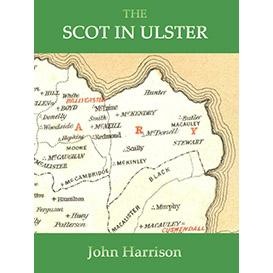
Derek at Library Ireland has over the years digitally published some very important historical books, and (as you might imagine) to a far higher standard than the likes of GoogleBooks and Archive.org. His latest publication is The Scot in Ulster: Sketch of the History of the Scottish Population of Ulster (1888) by Edinburgh author John Harrison.
BACKGROUND
Harrison (1847-1922) made his own journeys across the sea from Scotland, and much of the book is based upon his own observations. The Scot in Ulster was originally published as a series of articles in The Scotsman newspaper in the spring of that year. Harrison also wrote Oure Tounis Colledge; Sketches of the History of the Old College of Edinburgh (click here for Archive.org edition) which had been published in 1884. Towards the end of his life, in 1919, he published The History of the Monastery of the Holy-Rood and of the Palace of Holyrood House (click here). Both of these had also begun as series in The Scotsman. In 1920 he published The Company of Merchants of the city of Edinburgh and its schools, 1694-1920.
Here is an excerpt -
'...It is strange for any man who is accustomed to walk through the southern districts of Scotland, and to meet the country people going about their daily work in their everyday clothes and everyday manner, to cross into Ireland and wander through the country roads of Down or Antrim. He is in a country which is supposed to be passionately anxious to set up a separate nationality, and yet he cannot feel as if he were away from his own kith and kin. The men who are driving the carts are like the men at home; the women at the cottage doors are in build and carriage like the mothers of our southern Highlands; the signs of the little shops in the villages bear well-known names — Paterson, perhaps, or Johnstone, or Sloan; the boy sitting on the "dyke" with nothing to do, is whistling "A man's a man for a' that."
He goes into a village inn, and is served by a six-foot, loosely-hung Scottish Borderer, worthy to have served "drams" to "the Shepherd and Christopher North"; and when he leaves the little inn he sees by the sign that his host bears the name of "James Hay," and his wonder ceases. The want of strangeness in the men and women is what strikes him as so strange.
Then he crosses the Bann, and gets into a different region. He leaves behind him the pleasant green hills which shut in Belfast Lough, the great sweep of rich plain which Lough Neagh may well ask to show cause why it should not be annexed to its inland sea; he gets within sight of the South Derry hills, and the actors in the scene partly change. Some are very familiar; the smart maid at his inn is very like the housemaid at home, and the principal grocer of the little village is the "very image" of the elder who taught him at the Sunday-school; but he meets a donkey-cart, and neither the donkey nor its driver seem somehow or other to be kin to him; and the "Father" passes him, and looks at him as at a stranger who is visiting his town,—then the Scotsman knows that he is out of Scotland and into Ireland.
It is not in Belfast that he feels the likeness to home so much, for everybody is walking fast just as they are in Glasgow, so he cannot notice them particularly, and, of course, the "loafers" at the public-house doors, who are certainly not moving smartly, do not count for anything in either town; but it is in the country districts—at Newtown-Ards, or Antrim, where life is leisurely, that he recognises that he is among his own people. While it is in a town which is in the border-land between Scottish and Irish, say at Coleraine, on a Saturday market-day, that he has the difference of the two types in face and figure brought strongly before him. Some seem foreign to him, others remind him of his "ain countrie," and make him feel that the district he is in, is in reality the land of the Scot. The manner in which the two races have lived side by side for three centuries and are yet separate still, is stated with fine courtesy and good feeling in the account of the parish of Dungiven in Derry, written by the rector, for an old Statistical Account of Ireland.—The book was never completed, like so many noble attempts in Ireland.—"The inhabitants of the parish are divided into two races of men, as totally distinct as if they belonged to different countries and regions. These (in order that we may avoid the invidious names of Protestant and Roman Catholic, which indeed have little to say in the matter) may be distinguished by the usual names of Scotch and Irish; the former including the descendants of all the Scotch and English colonists who have emigrated hither since the time of James I., and the latter comprehending the native and original inhabitants of the country. Than these, no two classes of men can be more distinct: the Scotch are remarkable for their comfortable houses and appearance, regular conduct and perseverance in business, and their being almost entirely manufacturers; the Irish, on the other hand, are more negligent in their habitations, less regular and guarded in their conduct, and have a total indisposition to manufacture. Both are industrious, but the industry of the Scotch is steady and patient, and directed with foresight, while that of the Irish is rash, adventurous, and variable...'
Harrison's book will be 125 years old next year. Over a century later we can look at it and pick holes in some of the dated ideas - but his book is important as it is another example of the awareness of Ulster-Scots culture and heritage in the mid to late 1800s. As a light-touch introduction to the Ulster-Scots story it's hard to better.
BROWSE ONLINE FREE - click here
DOWNLOAD FOR DIGITAL DEVICES, JUST $3.99 - click here
A short biography of Harrison can be found here.
Saturday, October 27, 2012
The True Image: Gravestone Art and the Culture of Scotch Irish Settlers in the Pennsylvania and Carolina Backcountry
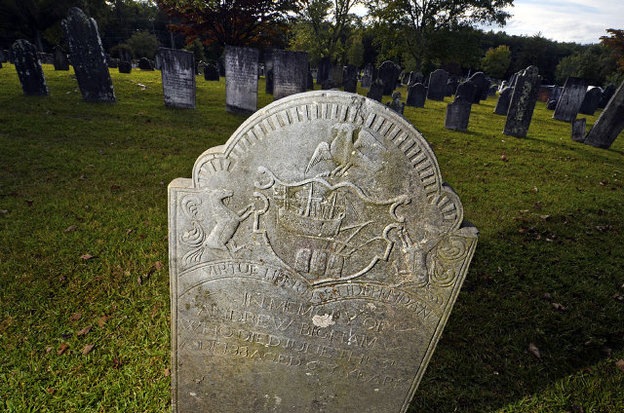
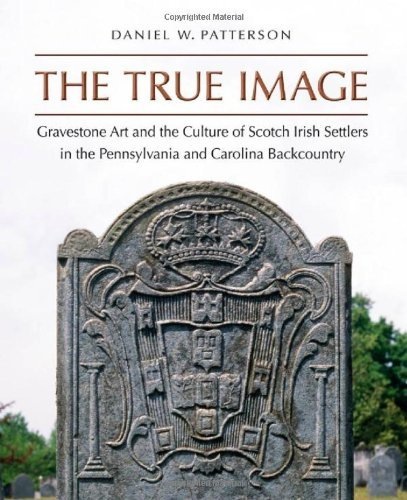
Intro: Here in Northern Ireland, Ulster-Scots heritage is all too often trivialised, used as a commodity to soak money from public funders, politicised and poisoned - and often by those who claim to be its firmest advocates. Meanwhile from across the Atlantic comes an example of the depth and quality of work which could also be done here, if the 'decision makers' only understood the value of what we have under our very feet.
(article below reproduced from this website)
..........................
For more than 30 years, UNC Chapel Hill folklorist Daniel Patterson spent spring breaks and vacations roaming old cemeteries in the Piedmont region of the Carolinas.
Dodging poison ivy and black widow spiders, he photographed weathered gravestones when the light was just right, so he could read the carvings; often he sat for hours, watching until that moment arrived.
At first, it was a casual hobby, sparked by curiosity over markers similar to those he’d seen in New England and read about in Northern Ireland.
Then, while tramping through such historic church cemeteries as Thyatira Presbyterian in Rowan County, Steele Creek Presbyterian in Charlotte and Waxhaw Presbyterian in Lancaster County, S.C., Patterson began to notice a certain gravestone style rich in artistic design, poetic inscription and professional detail. The carver didn’t sign the stones, but Patterson sensed they came from a single source.
Through painstaking research, he traced the markers back to a shop near Charlotte run by members of the Bigham family in the 18th century. By the late 1970s, Patterson’s hobby had turned into a passion.
Decades of intensive field work and digging into archives and little-used manuscripts have produced a book that not only examines the unique Bigham headstones made before and after the American Revolution, but a vanished pioneer culture.
Published this month by UNC Press, “The True Image: Gravestone Art and the Culture of Scotch Irish Settlers in the Pennsylvania and Carolina Backcountry” is a story that also encompasses how people lived during the violent times of the Revolution, their political and religious battles along with providing new insights into slavery.
David Perry, editor-in-chief at UNC Press, doubted Patterson would ever finish the book he’d been working on for so long. When the author, who is 84, finally turned in a massive manuscript, Perry took a “big gulp.”
“It was daunting,” he said. “I was expecting a catalogue of old gravestones. Instead, Dan gave us a world.”
Looking through the lens of three generations of Bigham carvers and their circle of apprentices, Patterson has produced a work Perry thinks will appeal not only to specialists, but a wider readership interested in families and history.
“This book will be around a long time,” Perry said. “It will remind us of who we are, how we got here and what we hold dear.”
Tom Hanchett, historian at the Levine Museum of the New South, said Patterson is a highly respected educator who for many years headed the folklore curriculum at UNC Chapel Hill.
“He trained generations of scholars to appreciate the traditions passed down to us today,” Hanchett said. “This book is his life’s work.”
The names and dates on old gravestones are keys to “helping us understand how people fit into a larger culture,” Hanchett said. “It’s a great way to see local culture at work.”
Linda Blackwelder, who helped Patterson research the history of the Steele Creek community, urged him “to hurry up and finish the book.”
“I told him ‘I’m gonna die before you get it finished,’” she said. “I’m excited he has completed it. I’m glad he’s made a record of these stones. They’re eroding. They’re all melting away and it makes me sick.”
Bigham family member Earl Pike connected with Patterson years ago and read early chapters of the book. He’s been looking forward to the finished work.
“I’m thrilled to death Dan has done this,” said Pike, 78, of College Station, Texas. “I’m going to pass it on to my children. They need to know something about their ancestors.”
A Greensboro native, Patterson is the author or editor of nine books, including “The Shaker Spiritual,” “Sounds of the South,” and “A Tree Accurst: Bobby McMillon and Stories of Frankie Silver.”
“The True Image” is particularly fulfilling. The burying grounds of North and South Carolina became windows into the past, allowing him to unlock some of the region’s mysteries.
As Patterson explored old cemeteries, he found the stones were mostly made by unskilled hands helping their families or neighbors.
But the Bigham work was different. These markers came from skilled, creative craftsmen who turned out what Patterson calls “a surprisingly large and impressive body of work.”
Making the Bigham connection wasn’t easy. In his spare time, Patterson left his Chapel Hill home and drove to old cemeteries scattered from Hillsborough to Chester, S.C. He walked the grounds, collecting names of deceased persons and dates from the markers.
Then he took the list to the State Archives where he explored old records. Probates were especially helpful. Families listing their deceased relative’s possessions might include a receipt for a gravestone, naming the person who made it.
Traces of the Bighams weren’t left behind in letters or diaries. Patterson had to dig the story from deeds, marriage bonds, probates, court minutes and Revolutionary pension applications. Of special help was a privately printed family history supplied by the descendant of another stonecutter in Chester County, S.C.
“It was slow going,” Patterson said. “Tedious and time-consuming.”
Ultimately, he identified about 1,000 stones from the Bighams and their apprentices. The markers – the earliest surviving art of British settlers in the region – were scattered across 11 counties in North and South Carolina and in Pennsylvania.
Patterson looked at all aspects of the stones – designs, motifs, inscriptions. He began to see cemeteries as “art galleries and little libraries … used for storytelling.”
At Sugaw Creek Presbyterian Church cemetery in Charlotte, Patterson found a Bigham marker with the names of four children who died within four consecutive days of each other in 1781.
Patterson wrote: “The stone has no explanatory inscription, but only the coat of arms, as if having lost so much of the future in so short a space, the family stayed itself with a tight grip upon the past.”
A church history provided an answer to what had happened. The children’s’ 16-year-old brother came home from the Battle of Kings Mountain on Oct. 7, 1780, suffering not only from a gunshot wound but smallpox. The battered teen soldier survived. But smallpox brought down his younger sisters and brothers, one by one.
Early one morning, as sunlight raked across a flat gravestone at Hopewell Presbyterian Church Cemetery in Mecklenburg County, Patterson saw shadows fall into the cuts carvers had crafted on the surface. And that made something magical happen: Previously invisible words appeared on the stone.
It looked like poetry – put on the 1815 marker of prominent citizen Richard Barry, the son of one of Charlotte’s founders. The words were hard to read, but Patterson managed to get them down and research the inscription on the Internet.
He found the epitaph came from “Poems on Various Subjects, Religious and Moral, by Phillis Wheatley, Negro Servant to Mr. John Wheatley of Boston, in New England,” the earliest book by an African-American poet.
Born in Africa, Phillis Wheatley had been a slave since the age of 7. Her poetry book had been published in London in 1773 – 11 years before her death.
“The member of the Barry family who devised the epitaph knew the volume well, for the lines bind together couplets from three of Wheatley’s elegiac poems,” Patterson wrote.
Why a white Southern family in pre-Civil War Mecklenburg County picked lines from a black poet for their kinsman’s marker is an intriguing question.
To Patterson, it appears they were “making a statement … that they disapproved of slavery.”
He couldn’t answer all the questions that arose while writing “The True Image.” But he tried – mining as much information as possible.
The job that once seemed never-ending is done. And Patterson hopes it will appeal to anyone interested in the region, its early history and people.
“I had no idea I’d ever finish this,” said Patterson. “Now, it feels good to get it over with. It’s been wonderful fun. And also exhilarating.”
..............
• Order the 544 page book on Amazon for £42.50
- click here
Friday, October 26, 2012
Nobody Knows The Trouble I've Seen / Peace in the Valley - Luther Dickinson (& recordings from The 78 Project)
This recording was released back in April of this year by Tompkins Square Records in San Francisco as a limited edition record, a 78rpm to be precise. The guitarist, Luther Dickinson, plays in a range of different bands including The Black Crowes and North Mississippi Allstars. The recording below of two old classics sounds like it was done in the 1920s, just right for something available on a 78rpm.
He's also involved in something called 'The 78 Project" with a range of other musicians and singers, to make new recordings of old old songs in the way they were originally recorded - nothing digital and no autotuners, all live. The video below of 'Glory Glory Hallelujah, Since I Laid My Burdens Down' is great - adding a fife really works and adds a certain 'Ulster-ness' to the performance! As you can see it's all recorded live, cut onto vinyl there and then and played back to the artists just the way the original 78s were. Inspirational!
(all 78 project videos available here)
The 78 Project: The Wandering - "Glory, Glory" from The 78 Project on Vimeo.
The 78 Project: Valerie June - "Happy or Lonesome" from The 78 Project on Vimeo.
The 78 Project: Joe Henry & Lisa Hannigan - "Red River Valley" from The 78 Project on Vimeo.
The 78 Project: Valerie June - "Wildwood Flower" from The 78 Project on Vimeo.
And this one which was written by 'Son of Ulster' the Baptist pastor and hymnwriter Robert Lowry...
The 78 Project: Adam Arcuragi - "How Can I Keep from Singing?" from The 78 Project on Vimeo.
...and a lovely version of the old murder ballad 'Banks of the Ohio'
The 78 Project: Vandaveer - "Banks of the Ohio" from The 78 Project on Vimeo.
Thursday, October 25, 2012
The Blue Sky Boys
If there's an old 'brother duet' that I really love , it's the Blue Sky Boys. There's something primitive and deceptively simple about their music, from the era before past-faced bluegrass and when music was just starting to be recorded. Stuff like this gives a wee glimpse of what music was like before commercialisation. Magnificent.
Tuesday, October 23, 2012
Tourism fixation?
Everything in NI these days seems to be justified by, or focussed upon, potential tourism. This is nothing new - the Ulster Tourist Development Association was the first tourism agency in the British Isles, founded back in the 1920s shortly after the establishment of Northern Ireland.
This is a small place and to prosper financially we need to attract money from beyond our own region. Tourism is important. However, to prosper culturally there are things we need to treasure, promote and recover for our own communal good, regardless of whether tourists care or not. But I'd argue that a culturally interesting and confident place will naturally attract people who want to come and see, and to enjoy being in that place, whether NI or anywhere else.
Marketing Northern Ireland as a cultural destination would have been difficult without 40 years of terrorism, which broadcast 40 years of urban and violent footage around the world and which became the paradoxical image for a place that is overwhelmingly rural and peaceful. But even before that it was hard to get the message out and for visitors to see a reason to get beyond the big iconic 'must-see' places.
I recently picked up a copy of Scotch-Irish, Third Letter by W. W. Watson of Salina, Kansas, published privately as a limited edition almost exactly 100 years ago on 6th November 1912. He begins his travelogue as follows:
"We were long undecided as to where we would spend our summer vacation. Being of Scotch-Irish descent, I was anxious to visit the land of my great grandfathers, Scotland and Ireland. After a great deal of discussion, we got off on the Kron Prinz Wilhelm from New York on July 16th. The Titanic disaster caused Mrs Watson to rather lean toward a summer trip to the Pacific coast, but as we had been to the coast so many times, usually returning over the Canadian Pacific, I held out somewhat unreasonably for spending our vacation this time on and across the Atlantic."
So far so good. He's stood up to his wife and has opted for a cultural quest to the old country.
After six days sailing they arrived at Plymouth, headed for two days in London, and then got a train to Fishguard in Wales. They took a ferry from Wales to Rosslare in the south of Ireland. From here they went to Cork, Blarney Castle, Queenstown, Bantry, Glengariff, Killarney, then to Dublin.
However, just when you think 'okay, the Scotch-Irish tourists have done the south, and now they're heading for a full immersion experience in Ulster, the province of their ancestors', it all gets a bit disappointing. They spent just 2 days here - they went to Belfast 'by far the liveliest city in Ireland, up-to-date and full of business', Portrush, Dunluce Castle, the Giants Causeway. They then took the train from Portrush via Ballymoney 'the home of President McKinley's ancestors' to Larne and sailed to Scotland, arriving at Stranraer. They whisked up the west of Scotland, back down to Edinburgh, then Melrose, and then back to London.
So, even 100 years ago, people from overseas were coming here to feel a connection with their roots and to enjoy some cultural tourism, but spent little or no time in Ulster at all, and when they did it was just for a quick look at Belfast, a spin up to the Causeway and away again. And that's what the majority of overseas visitors still do today.
There is so much more here than the big 'must sees'. But I wonder if these undiscovered gems will ever appeal to anyone apart from local daytrippers and the real hardcore heritage buff.
Sunday, October 21, 2012
“The ideological compass in Northern Ireland is pointing towards Narnia and the media are writing the script”
A highly insightful piece reported by Alan in Belfast over on Slugger O'Toole about Northern Ireland's media (a subject which has been touched on here many times over the years). Click here. It summarises a speech by Brian McDermott at the Workers Party conference in Belfast yesterday. An audio recording of the speech is on that same page.
'...and “audience figures” are what obsesses “media people” here in Northern Ireland, not “informing people, developing arguments or analysing the society we live in...'
A few weeks ago a friend who works in the NI media summarised that, regrettably, most people in that sector have 'a kind of well-heeled disdain' for tradition and ordinary things.
Brian McDermott's speech focuses on radio, and so would be interesting for him to expand the theme onto tv, print and online. And full credit to Alan for his work in regularly reporting events which are seldom, if ever, covered in the mainstream media.
(thanks to Michael for tipping me off about this)
Saturday, October 20, 2012
Broadside ballad entitled 'Sons of Levi, A New Masonic Song'
The late George Holmes gave me a recording of this song, I am pretty sure he played the lambeg drum on it but was too modest to admit that to me. I found it again recently here on The Word on the Street, a website by the National Library of Scotland which is a collection of nearly 1800 'broadsides'. The commentary on the song says that it is Jacobite in origin, became Masonic and then Orange. The lyrics from George's version are a little different than those shown below. The lyrics are full of quite esoteric scriptural references; I'll leave it for my more Biblically-literate readers to assess the claim from the chorus that a group of people can be 'the root and the branch of David, the bright and glorious morning star...'. George's recording of it is great.
Friday, October 19, 2012
Tuesday, October 16, 2012
Boston Harbour Auctions - Royal Ulster Yacht Club - 1899 America's Cup Pennant
An amazing item now up for auction by Boston Harbour Auctions, bids start at $1800 but expected to achieve $3000 - $5000. Description below:
Extremely rare original late 19th/early 20th century Royal Ulster Yacht Club pennant with painted and embroidered detail including the red hand of Ulster and Royal Crown; elements of their burgee. The bunting is marked R.U.Y.C.. Royal Ulster Yacht Club, was the sponsor club of Sir Thomas Lipton during his challenges for the America's Cup. The bunting is also marked "The S McFadden Co, makers, 198 Hudson St. NY". Sir Thomas Lipton, the tea and grocery magnate raced for the America's Cup five times, never winning. A story in the New York Times from 1899 details the events of the Lipton vessels and how they were adorned with national flags, Royal Ulster Yacht Club pennants and Lipton on private burgee. Flown from a topmast as it measures 15'5" x 9'. The flag does have some minor holes but is in great condition considering it's age.
Thomas Lipton's parents are often said to have been Ulster-Scots - from Clones in County Monaghan. 
Monday, October 15, 2012
Scotland viewed from Ballywalter at 8am this morning
The hills of Galloway in the distance, the Mull of Galloway in front of them, the waters of the North Channel, and with Ballywalter beach in the foreground. 
Saturday, October 13, 2012
Mission Hall Chic? The Tin Tabernacle Tearoom
Baileys Home and Garden of Ross-on-Wye (the place with the annual book festival) is a fairly unique retailer who have carved out a reputation for themselves as treasuring the simpler things of life. We have been there a few times.
Visiting their website earlier, I see they now have a 'Tin Tabernacle Tearoom'. Now, I'm not sure about converting wee former places of worship into eateries, but Baileys Home and Garden clearly understand the aesthetic and innocent beauty of these buildings. This may well be a brilliant repro rather than an original (apart from the giant pieces of cutlery it looks original to me). But can you imagine this in present-day Northern Ireland? I can't - not without some smart-alec 'twist' to spoil it.
Bailey's Home and Garden were awarded 'Best Homewares Retalier 2012' by The Daily Telegraph. Their book Simple Home is an absolute joy.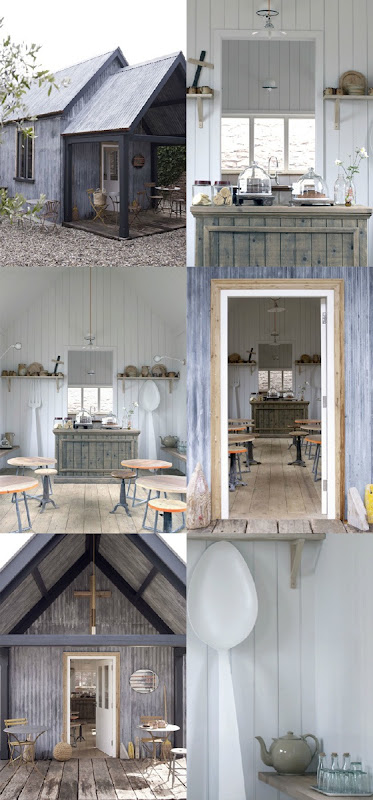

Friday, October 12, 2012
Thursday, October 11, 2012
What would John Knox do?
A sad story unravelling in Glasgow. Be thankful that Presbyterians on our side of the water have more sense than this. (full article here)
'... Whilst in the great scheme of things what I am about to write about is not of the same scale as some of the much deeper and wider injustices in our society and world today, nonetheless what is going on is indicative of a deep malaise within the church in Scotland in general and the Church of Scotland in particular...
For many years St Georges Tron has been a flagship church of the evangelical renewal within the Church of Scotland – something that has been going on since the 1950s ... the congregation have recently completed a £3 million refurbishment of their City centre building. As anyone who goes into the centre of Glasgow can see it is truly a church building at the heart of the city, reaching out to thousands every day. And yet it looks as though this is now going to end – not because of persecution from outside, nor decline within, but simply because the Church of Scotland has decided to destroy this work...'
It's nearly 500 years since a German Catholic monk, Martin Luther, took his lonely stand at Wittenburg, and sparked the Reformation and a return to a clear understanding of what Scripture teaches. 'Reformation' is often presented as solely a Protestant v Catholic thing, and as such is 'sectarianised'. However one of the phrases linked to the Reformation of the 1500s and 1600s and Reformed thought generally is 'Semper Reformanda' - always reforming.
Sadly it increasingly seems that many nominally Protestant denominations today need a new Reformation.
Wednesday, October 10, 2012
Statistical Survey of the County of Antrim, by Rev John Dubourdieu of Annahilt, 1812
"... the descendants of the Lowland Scots still retain the accent of their original country, though it is not as strong as it formerly was; and the English colonists have in many instances acquired it..."
Monday, October 08, 2012
A message from Georgia
It's always an encouragement to get this sort of feedback (reproduced with permission).
.................
Mark,
Stumbled on your blog site. My wife and I made two trips and spent four weeks in Northern Ireland and Southern Scotland in 2011. Being from southern USA I just wanted to put my feet on the land of my heritage. Great trips, highlighted by great people who made me feel at home. We may be miles apart in distance but we still share many common values passed by previous generations. Thanks for keeping our history alive and well in this digital age.
I'm from Georgia. My ancestor John Agnew sailed from Larne to South Carolina in 1772 with Rev. Martin's group.
Clinton Agnew
'Ireland for Christ' - Rev John Pollock of St Enoch's Presbyterian Church, Belfast (part 2)
Rev John Pollock (subject of this previous post here back in August) turns out to have been a fascinating character. Thanks to Robert and Margaret who got in touch with me I now have the words and musical notation of 'Ireland for Christ' which he wrote in 1899. A scan is reproduced below, with permission -
The references in the lyrics to 'ancient land of saints and sages', 'from the slavery of ages, rise to liberty', 'Erin's sons and daughters' etc. read today as quite (N)ationalistic. However by way of contrast I've also been sent handwritten tonic sol-fa notation for a piece that Pollock wrote to be the 'Christian Endeavour Convention Song, Derry 1903' entitled 'No Surrender' !. Presumably the words of it had Gospel content and he was just making use of the well-known slogan to catch the attention of the audience at the Convention, in a way that was appropriate for the city.
If these two pieces suggest that Pollock's politics wavered a bit, then he confirmed that in a later speech. I recently came across a very interesting article in the North Down Herald from early 1914 which gives a report of a visit Pollock made to Hamilton, Ontario, Canada where he spoke at an Orange Hall in North James Street.
'...His opposition to Home Rule was made all the more remarkable by the admitted fact that he was a Scotch Liberal. He confessed that he had already changed his mind on the question twice... at the outset he proclaimed he was "a Home Ruler on principle, but thought Irish self-government impossible under present conditions"..."I have no objection to a free Parliament on College Green in Dublin, but I do object to Italian rule"...'
The article goes on to explain that his only reservation was of 'Rome Rule', ie Catholic church interference in a future 'Home Rule' parliament in Dublin, and suggests that if it weren't for this suspected interference Pollock would have supported Home Rule.
Bear in mind that Pollock was minister of the single largest Presbyterian church in the British Isles at the time. So, whilst not very 'PC' for today, his speech reveals intriguing nuances within the mind of one of the most prominent Ulster Presbyterians 100 years ago, whose speeches in Canada were given newspaper coverage back at home. Whichever side of the political debate Pollock found himself on, his focus remained on the Gospel.
Sunday, October 07, 2012
Mumford & Sons - Come Thou Fount of Every Blessing
A gem for a Sunday morning, written in 1757. (see Wikipedia entry here)
Come Thou Fount of every blessing
Tune my heart to sing Thy grace;
Streams of mercy, never ceasing,
Call for songs of loudest praise
Teach me some melodious sonnet,
Sung by flaming tongues above.
Praise the mount! I'm fixed upon it,
Mount of God's unchanging love.
Here I raise my Ebenezer;
Hither by Thy help I'm come;
And I hope, by Thy good pleasure,
Safely to arrive at home.
Jesus sought me when a stranger,
Wandering from the fold of God;
He, to rescue me from danger,
Interposed His precious blood.
O to grace how great a debtor
Daily I'm constrained to be!
Let that grace now like a fetter,
Bind my wandering heart to Thee.
Prone to wander, Lord, I feel it,
Prone to leave the God I love;
Here's my heart, O take and seal it,
Seal it for Thy courts above.
Tuesday, October 02, 2012
Mumford & Sons with Emmylou Harris - help!
If any US-based readers can somehow help with this I'd be very grateful. Mumford & Sons and Emmylou Harris performed a one hour concert last week on CMT Crossroads. This channel isn't available in the UK and the CMT website won't allow UK residents to view the online clips. Here's the link.
Saturday, September 29, 2012
Andrew Bonar-Law in Comber and Newtownards, Easter 1912; speech references to Scotland
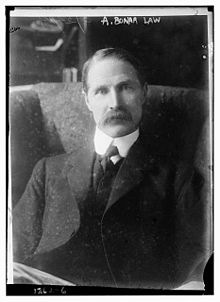
Born in Canada, Bonar-Law was briefly British Prime Minister in the 1920s. During the anti-Home Rule campaign, as leader of the Conservative Party, he toured parts of Co Antrim and Co Down around Easter 1912. He and others, including Sir Edward Carson, arrived at Comber Square around 1pm on Easter Monday. During his speech to the gathered crowd, Bonar-Law pressed an Ulster-Scots button:
'...this is the first time I have visited Ireland on a political mission, and I can assure you that firmly I believe you are determined under no circumstances to allow yourselves to be driven out of the kingdom which your fathers have done so much to build and to sustain... I know Scotland well, and I believe that rather than submit to such a fate the Scottish people would face a second Bannockburn or a second Flodden Field. (Cheers.) And how can they expect that you will submit? All that is needed is to enable the people of England and Scotland to realise with what horror you regard the change which for a party purpose they are willing to force upon you. (Cheers.) Once they have realised that they will have realised also that the Unionists here are determined that the Union shall remain long after we who are now fighting your cause have been buried in the soil beneath (Loud Cheers.)...'
He then travelled to crowded Newtownards Square. Rev William Wright later reflected on how he welcomed Law to the platform:
'...The great bulk of the people who stood around him that day were descendants of Scotsmen, holding the creed of their ancestors, of which the late William Ewart Gladstone - no mean authority in such matters - stated, when addressing their kindred in their own land: "which, whatever else may be said of it, made your forefathers a strong and determined race." That strength might have been held in reserve in the peaceful times they had had under the British Crown, or might have been allowed to manifest itself in the pursuits of peace, but it abode in the blood of the people of Ulster, and if necessity arose it was there as it was in that province and in Scotland in many a field of fight in the brave days of old...'
Bonar Law responded:
'...As has been pointed out, my father was born and is buried in your province. Even when I was a boy in Canada I remember well how proud he was, and how constantly he showed his pride in his Ulster blood - a pride which could not have been greater if he had been descended from a line of kings, instead of being, as he was, the son of the small farmer in Ulster...'
.............
Many other speeches made in the Ards at the time, all designed to motivate and mobilise the listener, referred to Scottish history and ancestry. I am sure that these references were carefully chosen for maximum effect. The Ards is an Ulster-Scots heartland and the newspaper accounts of the events of 1912 show that very clearly.
NB - It may seem strange to us that Bannockburn and Flodden were employed in 1912 in a pro-Unionist argument, as both were great battles between the armies of Scotland and England. Bonar-Law's point was not purely political, but rather to show that in years gone by people had refused to be oppressed and were willing to fight for their freedom. And by the report above of the crowd cheering, his Comber audience knew full well what he was talking about.
Sir Edward Carson on the Ulster-Scots
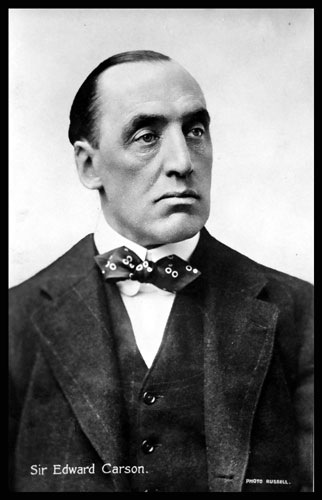
(Speaking in Portadown, Wednesday 25th September 1912)
'...Was bragging a characteristic of the Ulster Scot? Was it by bragging that they won Derry, Aughrim and the Boyne? I remember Mr Gladstone once wrote a famous letter, he said, “read history.” I wonder do the Radicals ever read history? If they do I wish they would look over the history of the American War.
I should like just to quote to you as evidence of the Ulster Scot what two or three great men who have studied him, not merely in this country, but in America and elsewhere, have said, and I would first quote what the present American Ambassador in England Mr Whitelaw Reid, has said – “they (the Ulster Scots) were the first to proclaim for freedom in these United States, even before Lexington, Scots Irish blood had been shed on behalf of American freedom, and the spirit of Patrick Henry animated the Scotch Irish to a man when the clash came. In the forefront of every battle was seen their burnished mail and in the gloomy rear of retreat was heard their voices of constancy and courage.”
And the late President M’Kinley, who, I believe, came himself from Antrim descent, said this – “the Scotch Irish man comes of mighty stock, descending from those who would fight, and who would die rather than surrender.”
Lord Rosebery who was Prime Minister of England, said this – “the Ulster Scots without exception are the most dominant, the most irresistible race that exists in the universe.”...'
Friday, September 28, 2012
The gravestone of Rev George Brydone at Kircubbin Presbyterian Church (from Flodden > Covenanters > 1798 Rebellion > 1912 Ulster Covenant)
The flat stone in the foreground is the gravestone of Rev George Brydone, who (then aged 51) was the minister of Kircubbin on the shores of Strangford Lough in 1798. He was from Scotland and had arrived at Kircubbin aged 31. Brydone's understudy Archibald Warwick of Loughriscouse was arrested and executed nearby (aged just 29) for his involvement in the 1798 Rebellion and was later buried at Movilla. The inscription on George Brydone's stone reads:
UNDERNEATH
lies the body
OF REV. GEORGE BRYDONE
late minister of the presbyterian
Congregation of Kircubbin
He was ordained to the pastoral charge
of this congregation
by the Presbytery of Lauder, Synod of Kelso, Scotland
March 3rd commenced his ministerial labours
April 26th 1778
And departed this life September the 3rd A.D. 1817
Aged 70 years.
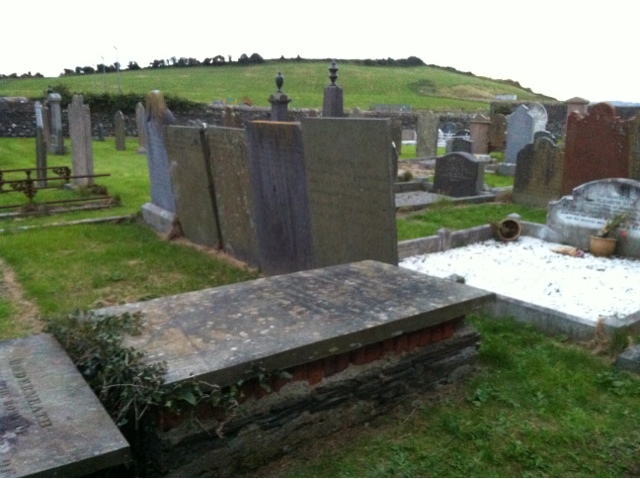
Situated halfway between Kelso and Edinburgh, Lauder had been a Royal Burgh since 1500 and was where John Knox and James Guthrie (the second martyr of the Covenanter 'Killing Times') had ministered in previous centuries. The town grew in the shadow of Thirlestane Castle, the architect of which, Sir William Bruce, also designed the unique Old Parish Church in 1673.
The famous collection Wilson's Tales of the Borders and of Scotland (first published in 1834) includes a story about a John Brydone, set in 1645 in the area near Lauder, called 'The Adopted Son - a Tale of the Times of the Covenanters' (read it online here). It shows that the Brydones were very familiar with being persecuted by the King's troops - back in 1600s Scotland, never mind in late 1700s Kircubbin.
Earlier still, a William Brydone of Selkirk had been knighted by King James IV of Scotland on the battlefield of Flodden in 1513. In 1790 a John Brydone also of Selkirk was reported as still having William's sword.
The Edinburgh Magazine and Literary Miscellany of 1817 reported Rev George Brydone's death, 'At Dunevely, Ireland'. Next to his stone is another flat one, to 'John Brydone of Donavelly' (Dunevely) who died on 16 October 1825 aged 74. Presumably they were brothers.
.........
It is easy to imagine the Brydone brothers standing alongside their congregation and neighbours at Kircubbin in October 1798, watching young Warwick being hanged by Redcoats - remembering full well their own illustrious ancestors who had fought similar struggles in centuries gone by, and no doubt sympathising with the cause Warwick had died for.
It is no wonder that a Newtownards Chronicle report of an Ulster Covenant meeting at Kircubbin Orange Hall in 1912 records that when William Mitchell-Thomson (the Scottish-born MP for North Down) referred in his speech to the Scottish Covenanters of old, someone in the room cried aloud "their descendants are here tonight!".
Over the next few days the Ulster Covenant will be marked. This simple story above shows that the Ulster Covenant, when cut off from its Scottish cultural roots and the power of handed-down family traditions, becomes a hollower story of simply 'big picture' politics - rather than deep rooted centuries-old heritage which coursed through the veins of the people of 1912.
Political history is interesting - but it's not the whole story.
Wednesday, September 26, 2012
Tuesday, September 25, 2012
Emigration, Orangemen and a St Patrick's Day violin (fiddle) in Portavogie, March 1911
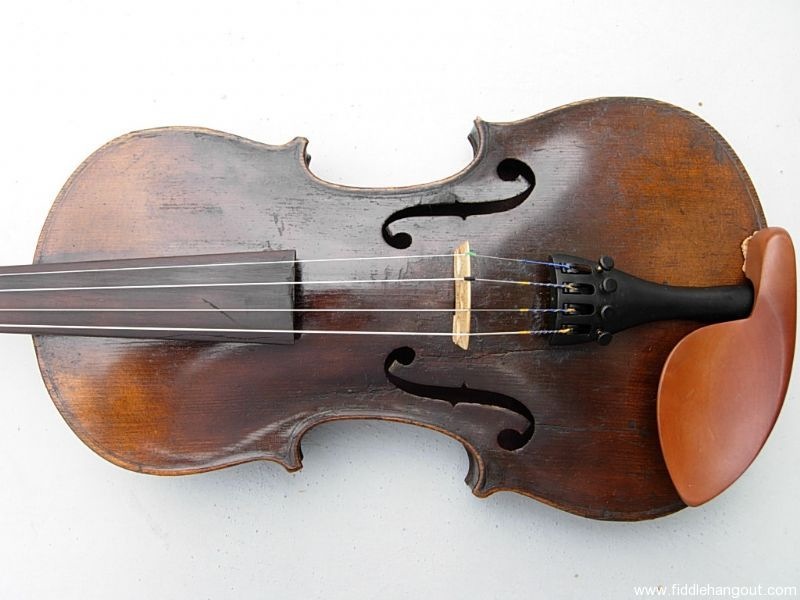
From the Newtownards Chronicle, 25 March 1911
PORTAVOGIE TRUE BLUES LOL No 552
The members of this lodge met last week to do honour to two of their members, Brs. W M'Master and Alex M'Vea, who left for Chicago, USA on St Patrick's Day. Br. Wm Clint was moved to the chair, and in the course of his remarks thanked the members for placing him in that position, and expressed regret at the departure of their brethren, but wished them every prosperity in the land of their adoption. The chairman also presented each with beautiful certificates. The secretary of the lodge, Br. David Kelly, also spoke. He said he could not let the occasion pass without saying a few words, and he knew he was only expressing the heartfelt wish of all the members of that lodge, when he wished their much respected brethren (Brs. A M'Vea and W M'Master) health, happiness and prosperity in the land they were going to, and hoped that before many years they would have made enough to enable them to settle down at home in Portavogie once more. He concluded by wishing them a safe passage over, and to say he hoped they would not forget the happy times spent in No 552 (applause). Brs. M'Vea and M'Master amicably replied. During the evening gramophone selections were given by Br. Alex O'Prey. A dance was subsequently indulged in, the music being rendered by Br. Hugh O'Prey (violin). Br John Kelly, W.M. kindly acted as M.C. and rendered valuable assistance. The dancing continued until a late hour, after which the singing of 'Auld Lang Syne' brought an enjoyable evening to a close.
• Alex and Hugh O'Prey were clearly musical; both lived at Ratallagh between Portavogie and Cloughey, and signed the Ulster Covenant at Ballyeasborough Orange Hall. According to the 1911 Census Alex was 19; he had a 16 year old brother called Hugh. Their father was also called Hugh, aged 45. I suspect the father was the fiddle player. The family was Church of Ireland (presumably Ballyeasborough again) and all of the men were blacksmiths.
• William Clint of Cloughey also signed at Ballyeasborough
• David Kelly of Kirkistown signed at Kirkistown Orange Hall
Monday, September 24, 2012
Ards & The Ulster Covenant - the story of a community
The 'big picture' political story of the Ulster Covenant is everywhere at the moment - radio, tv, newspaper and events. Tonight I spoke at the launch of 'Ards & The Ulster Covenant' exhibition which is now on display at Ards Town Hall until 6th October before then starting a 'tour' of other towns and villages across the Borough. I worked on the exhibition with a number of other folk who are readers here (go and see the exhibition - they are all named on the acknowledgements).
It takes a different angle, telling the grassroots story of the Ulster Covenant in the Ards area - of people, events and stories that the standard accounts gloss over. The panels are entitled:
• The Ards in 1912
• Connections with Scotland
• Home Rule and the Idea of the Ulster Covenant
• Public Rallies in the Ards
• Famous Ards Signatories
• The Women's Declaration
• Ards Folk who signed Beyond Ulster
• Differing Views, Mutual Respect
• From Ulster Covenant to Northern Ireland
There is also a large map showing the locations where the Covenant was signed in the area, with small bar charts of the numbers of men and women who signed. It's intended for a local audience, so therefore the approach is to tell local stories - this meant that fresh research was critical, to unearth themes and accounts that haven't been seen in 100 years. Various artefacts have also been uncovered and included - such as the handwritten Covenant from Ballywalter, and the Ballyfrenis banner.
If you live in the area or have some connection here, make a point of going along to see it and drop me a line to give some feedback.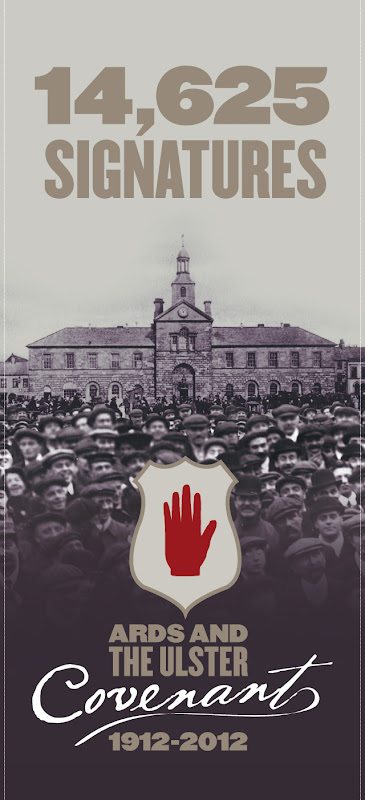
Detail from map panel:
Some quick snaps